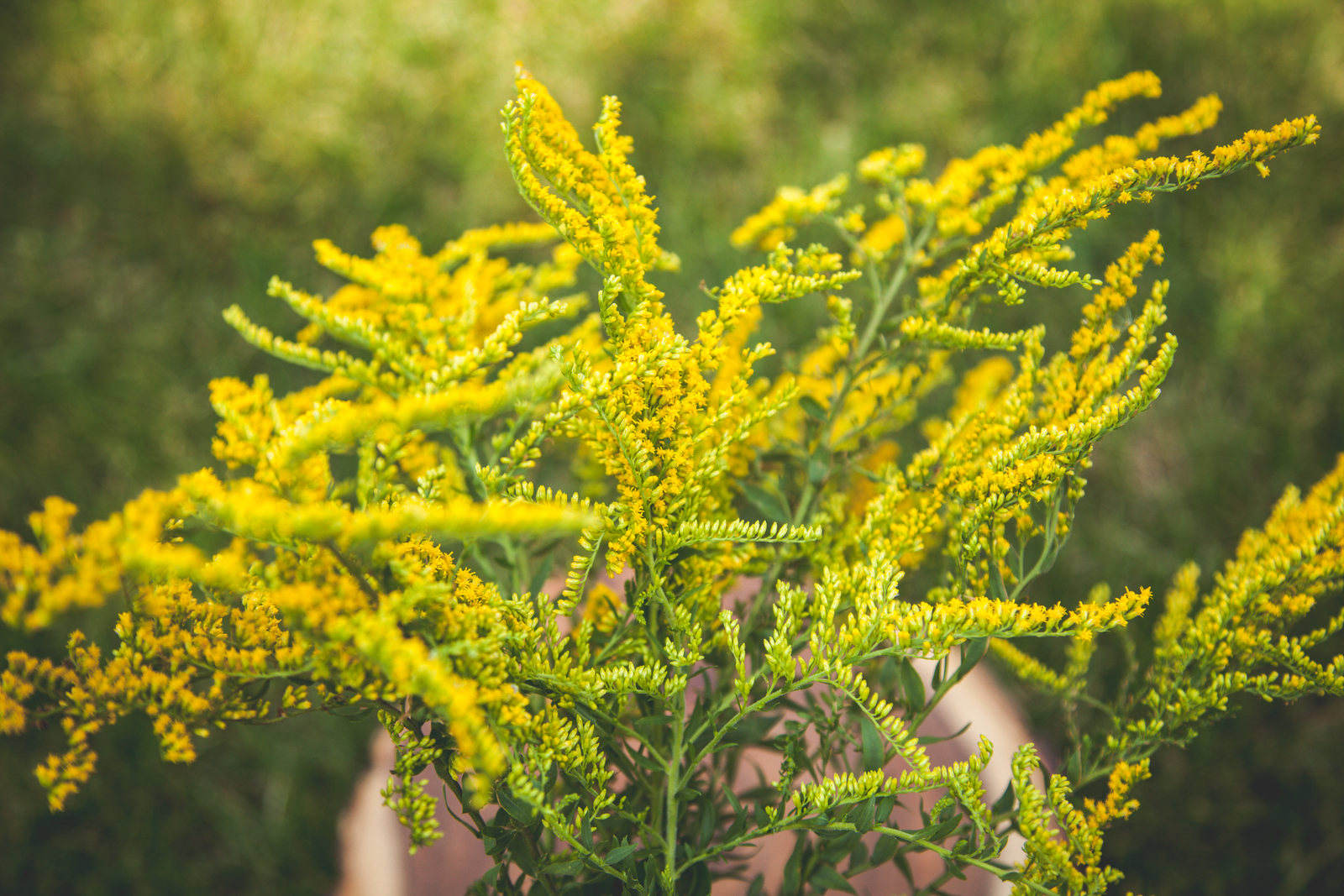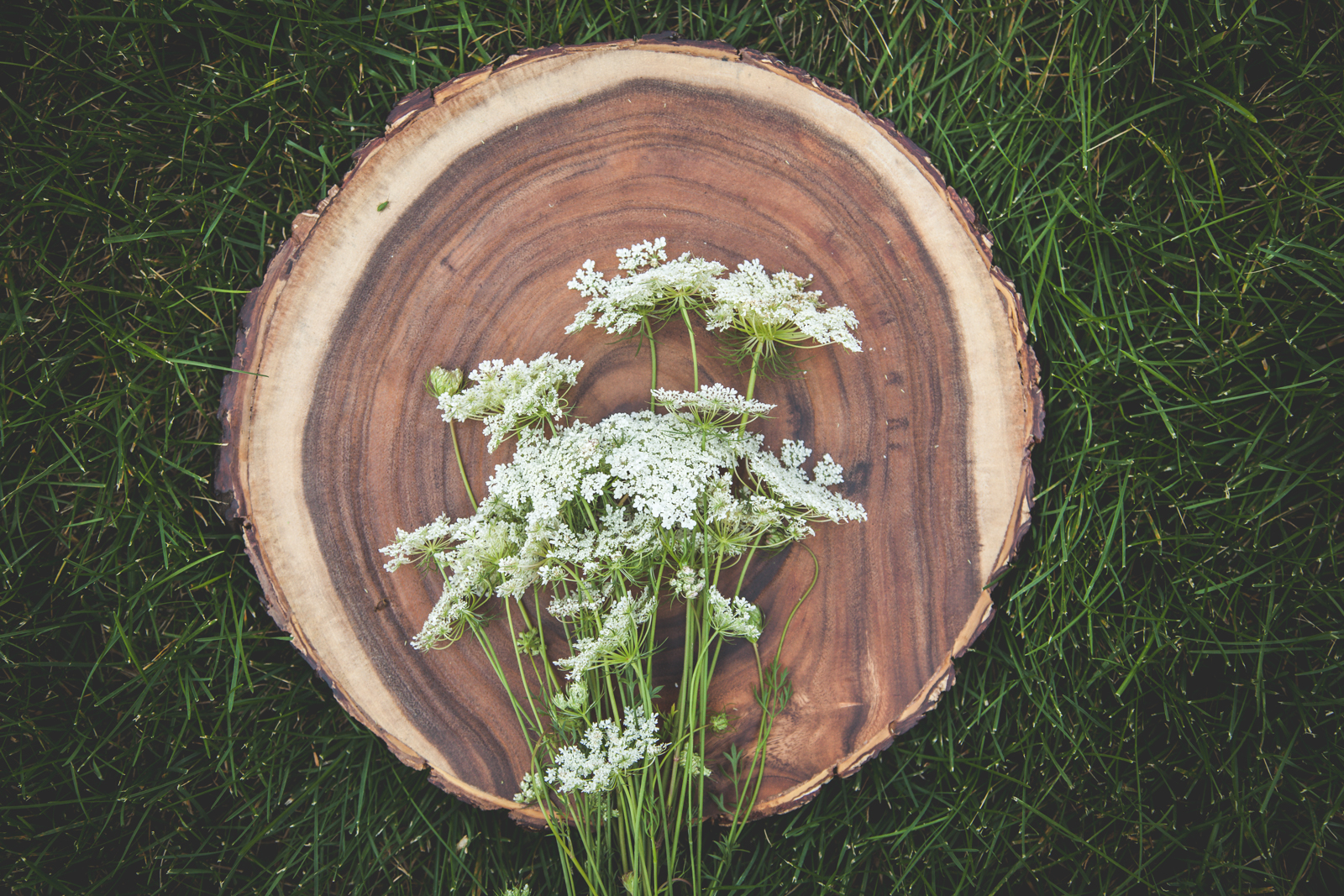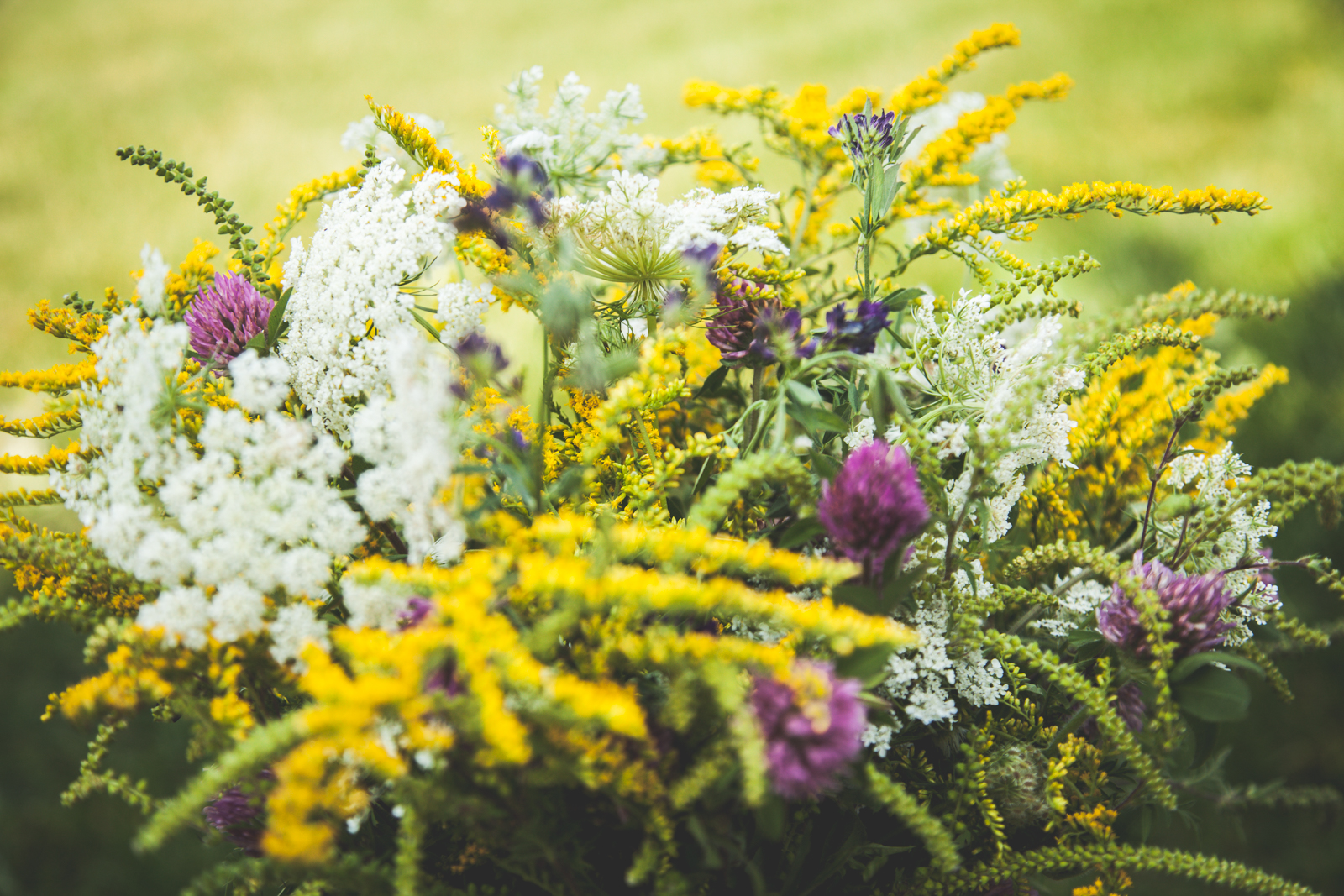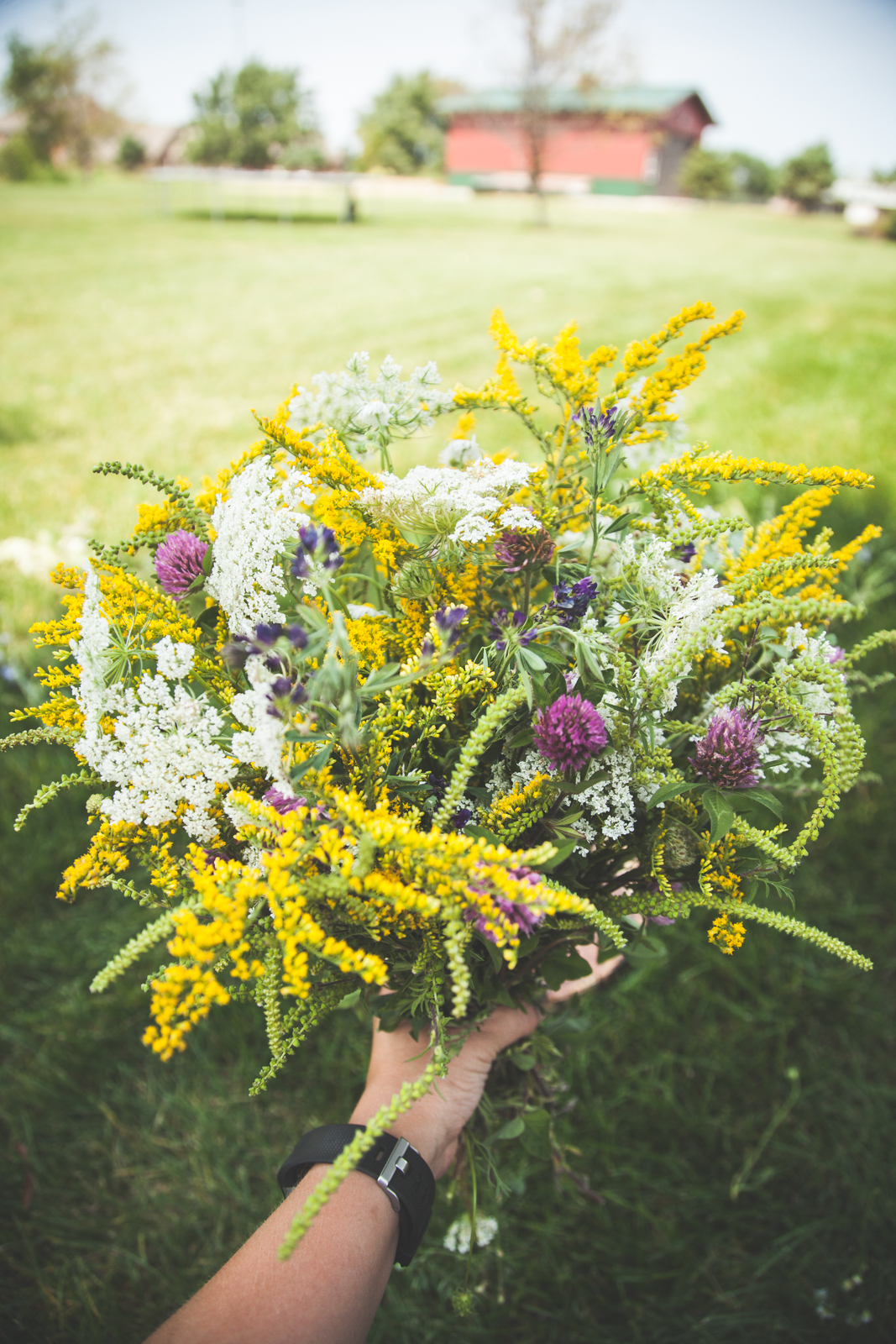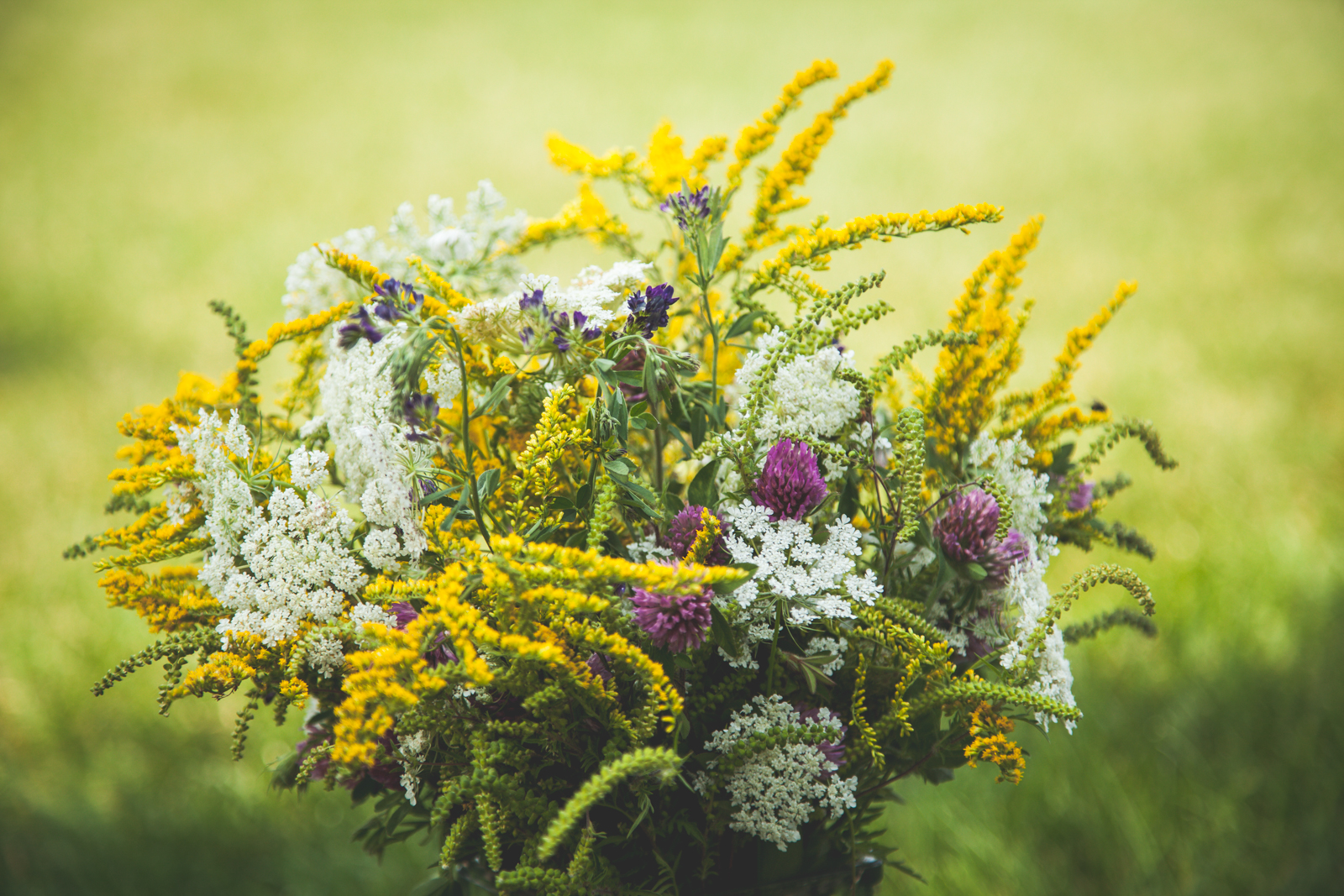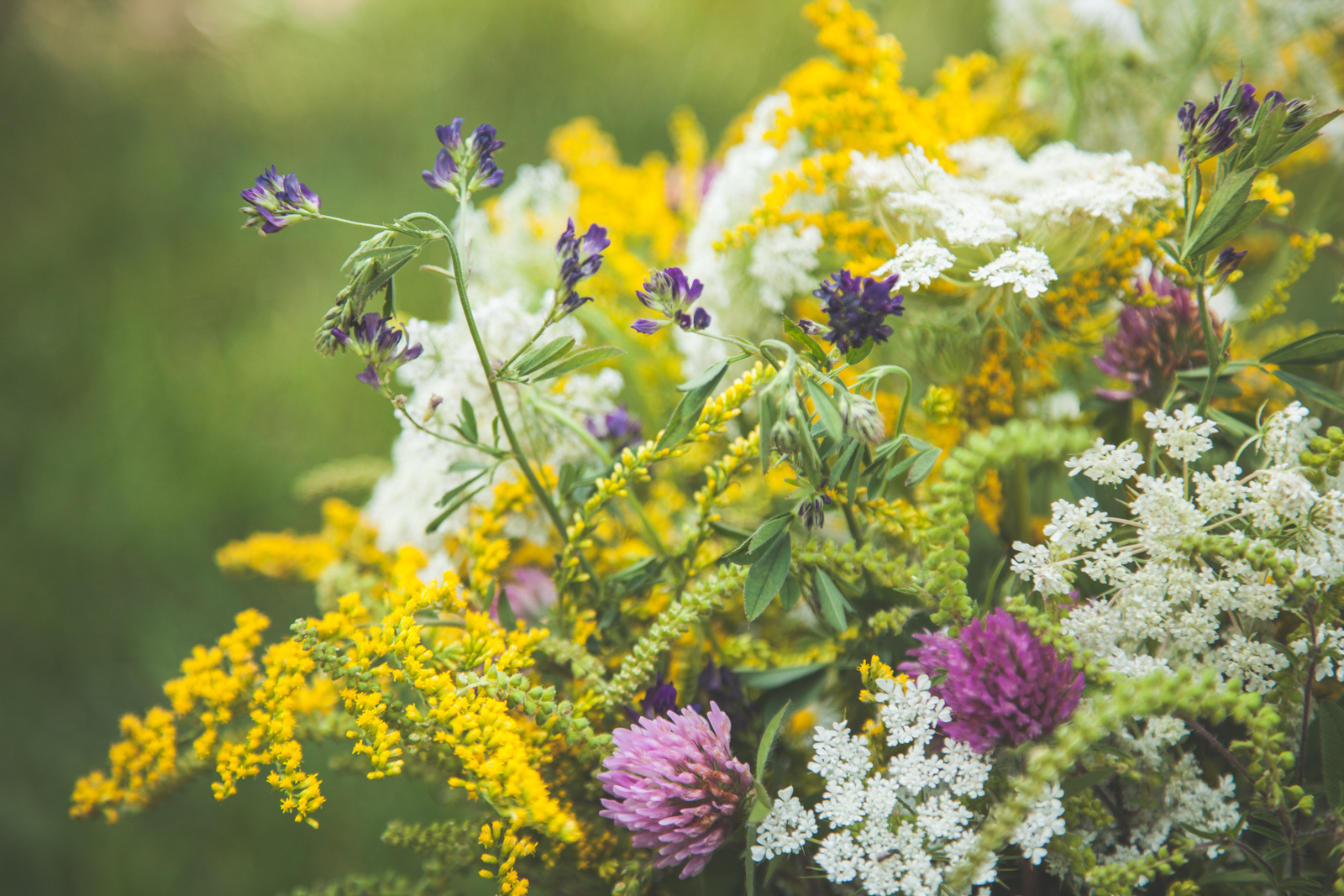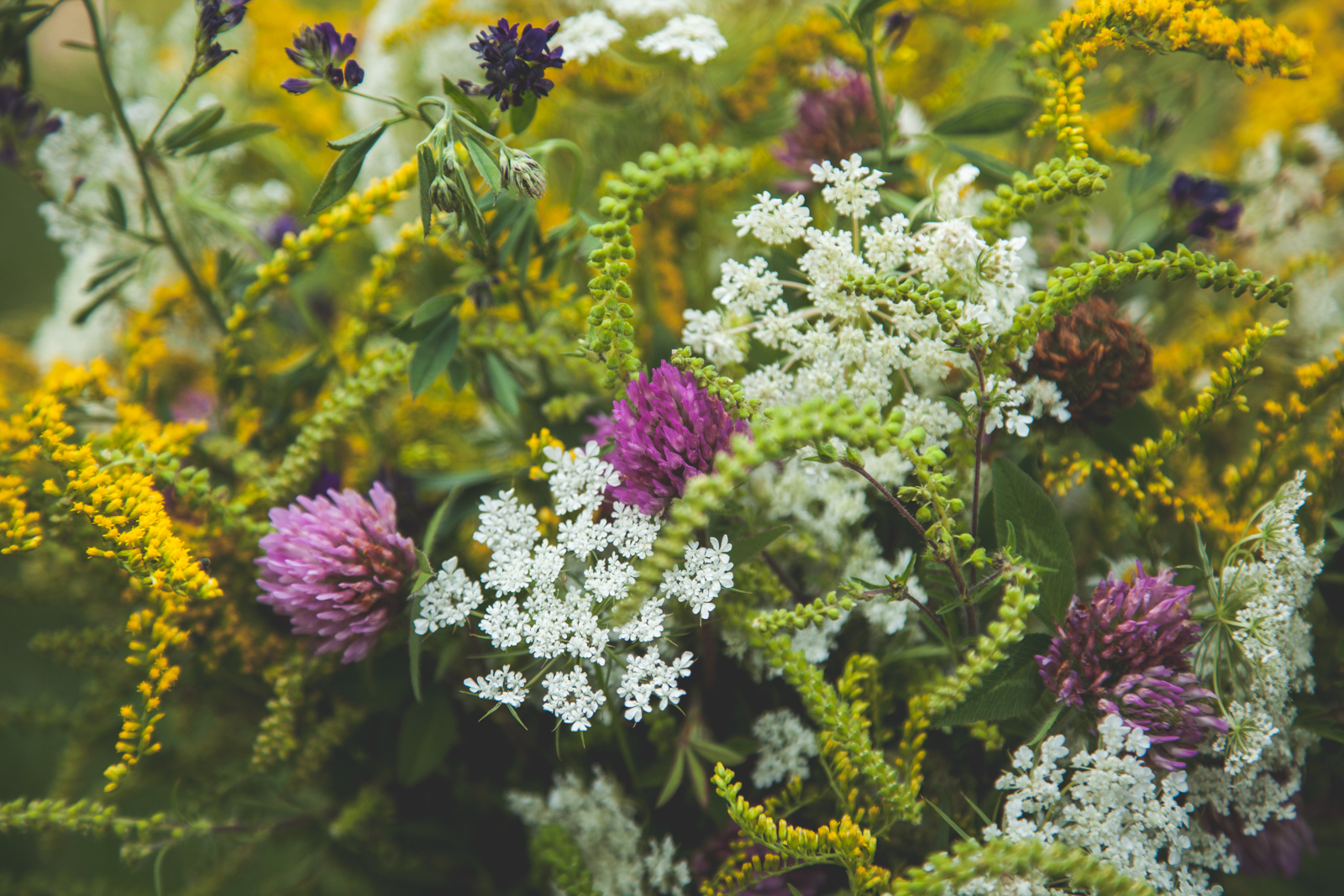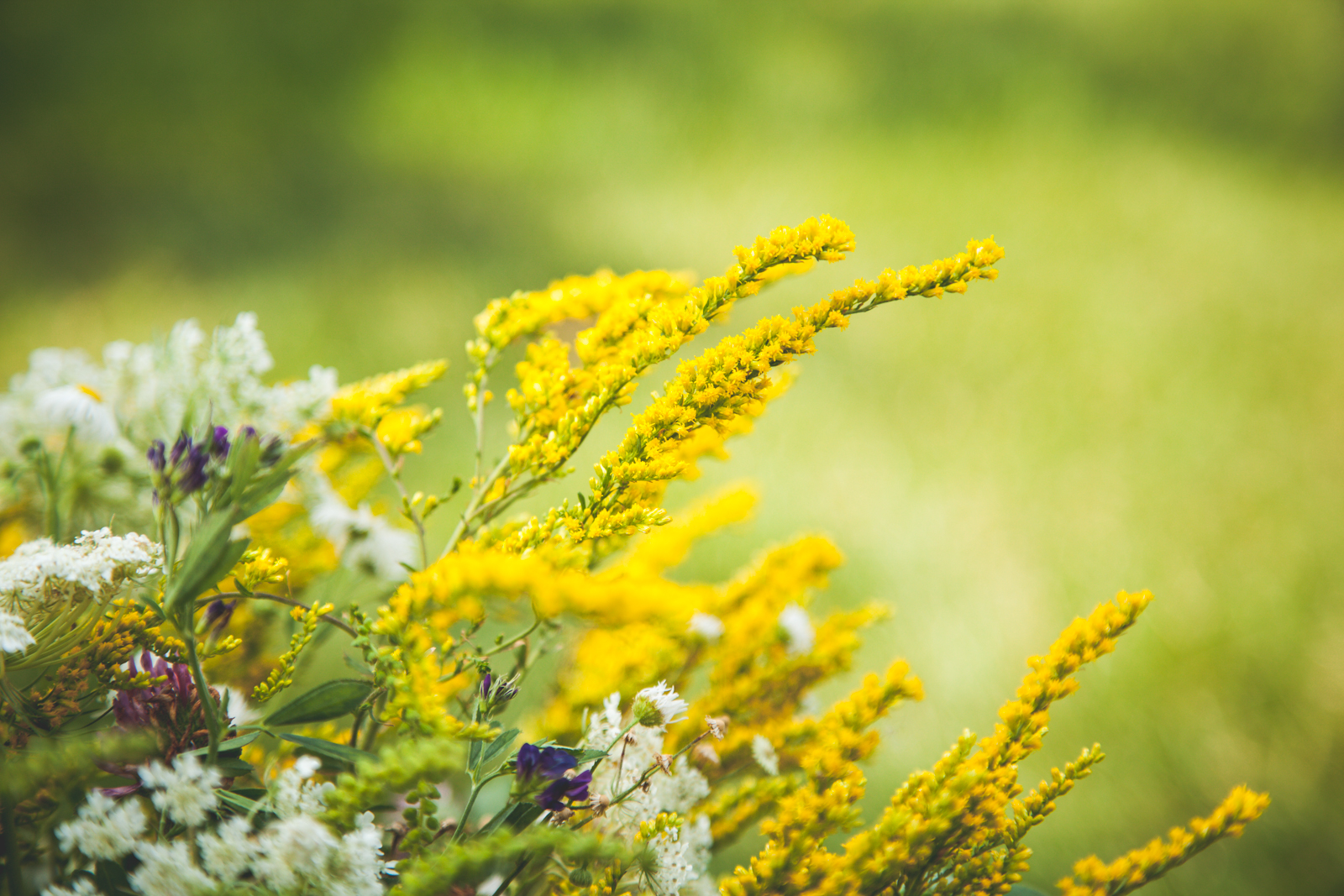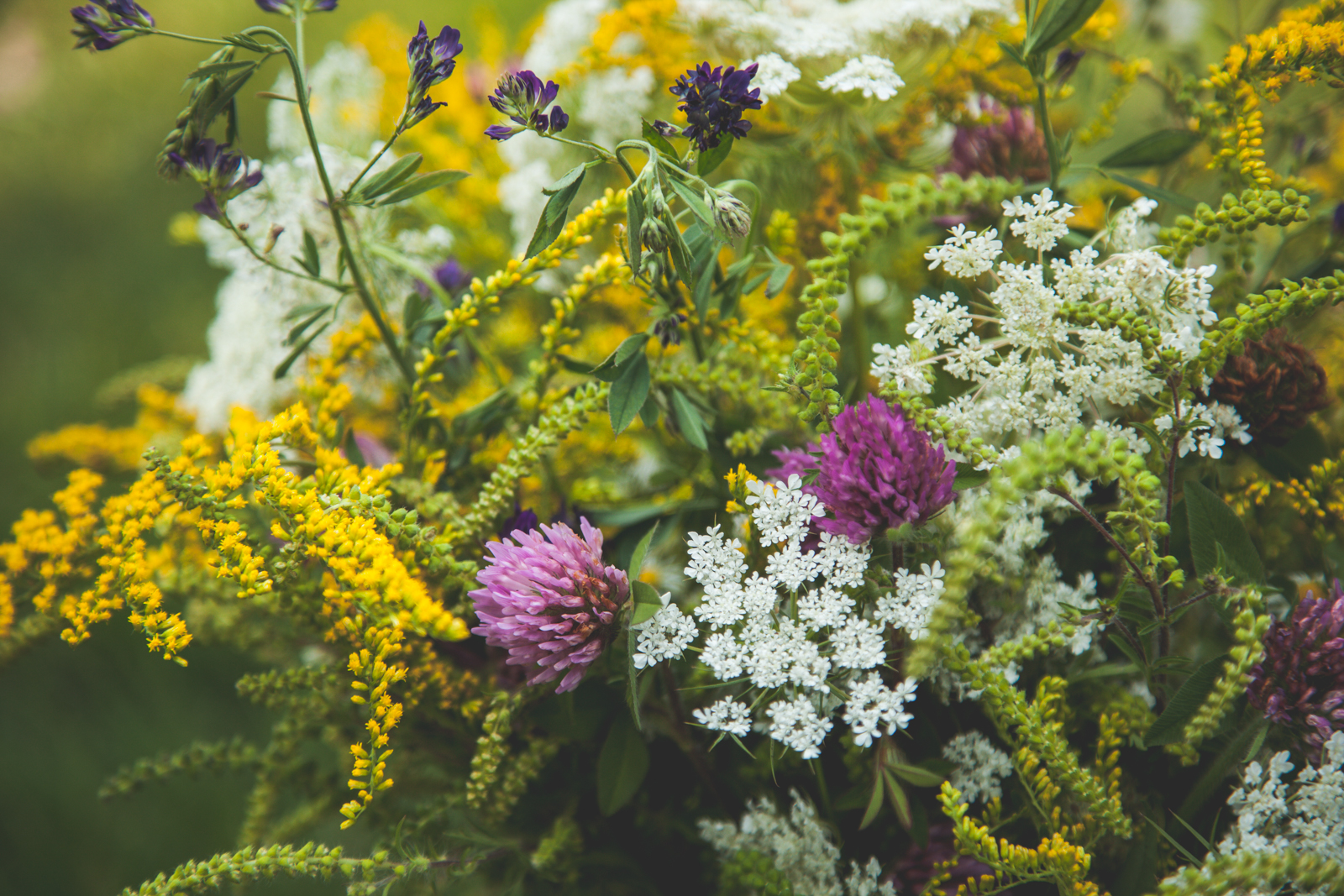Wild Flowers - Part Two
This year, I wanted to make it a tradition to pick a wildflower bouquet on a walk of mine. My favorite part of doing this is being able to spend time with my mom during the exploring and the researching part. (Check out part one!)
Back in August, my mom and I went on a walk around our home in Manhattan, IL (where I was first inspired by the wildflowers), and it seemed like the “weeds” were in perfect shape to embark on another bouquet creation.
While a few of these that I picked are well-known for making allergies react, I suffered through that to bring you the most beautiful bouquet I have made yet!
The research was difficult again this year, but with the help of my mom, we were able to find all the wildflower names from this bouquet:
Goldenrod
I always forget how difficult it is to research wildflowers, but this one was an easy one (aka, my mom knew right away). Goldenrod is known for being the worst cause of allergies, which is not something I wanted to hear since I get it really bad.
But as allergy-driven these were, I couldn’t help but add these to my bouquet. That vibrant yellow added a nice balance. Also, the long stem of flowers gave the bouquet a movement that really added dimension.
Prairie Fleabane
This flower was the super tedious to find because there are a plethora of wildflowers that look almost identical to these, but the stem, leaves, size, and amount of flowers all came in handy to narrow this one down to be Prairie Fleabane.
Growing in a somewhat bush-like way, these suckers gave me a hard time to pluck – hence why there are so few of them.
Alfalfa
Let me just tell you, I NEVER knew what alfalfa looked like. This wildflower was one of the hardest to figure out because by the time I picked it, the flowers had started receding.
My mom confirmed it was definitely alfalfa especially because we picked it right along a farm that grows it (which I never knew). I guess alfalfa is used to feed livestock – the animals have to eat sometime!
Queen Anne's Lace
I have always heard this name, but my mom and I thought it was just a regional nickname for this wildflower. Turns out Queen Anne’s Lace is what it is called along with Wild Carrot. If you ever see this, the root looks a lot like a carrot and if you break the stem, it even smells like it.
I personally love the fullness that this flower gives and knew I wanted to include it in my bouquet.
Ragweed
The MOST difficult one out of this bouquet to find was this silly one. We weren’t sure if we should look under wildflowers or wild grasses. When you look close to the top of this, it looks like the flowers are completely done and aren’t in season.
It grew in a bushy way and, when I tried picking them, took the whole root out. These were stubborn ones. Though, we found that this is actually ragweed. Ragweed resembles goldenrod a little with the shape of how it grows, but it stays that green color, lending itself to a good “filler” for my bouquet.
Red Clover
I’m positive that if you’re from the Midwest Region, you have seen these all over the place. My mom always calls this honeysuckle because if you pull the purple petals from the ball base, you can suck on them and it gives a sweet nectar.
However, it is NOT honeysuckle but rather red clover. This wildflower is also something that farmers grow to feed their livestock. Horses seriously love this stuff!
I’m still adjusting to living at home with my parents, but doing this project with my mom is something I will always cherish. It was especially fun because all these were from around our home and they are all different than what I picked for part one.


